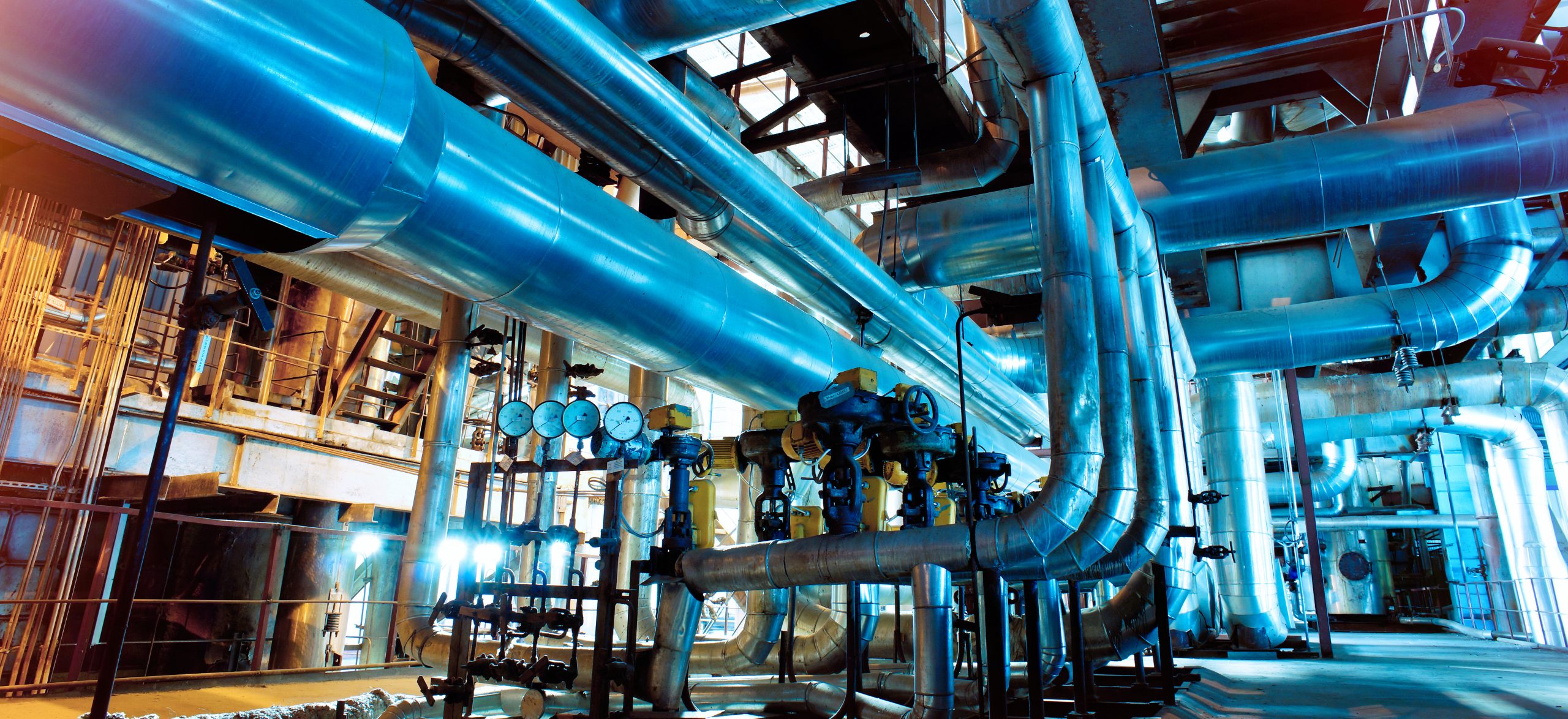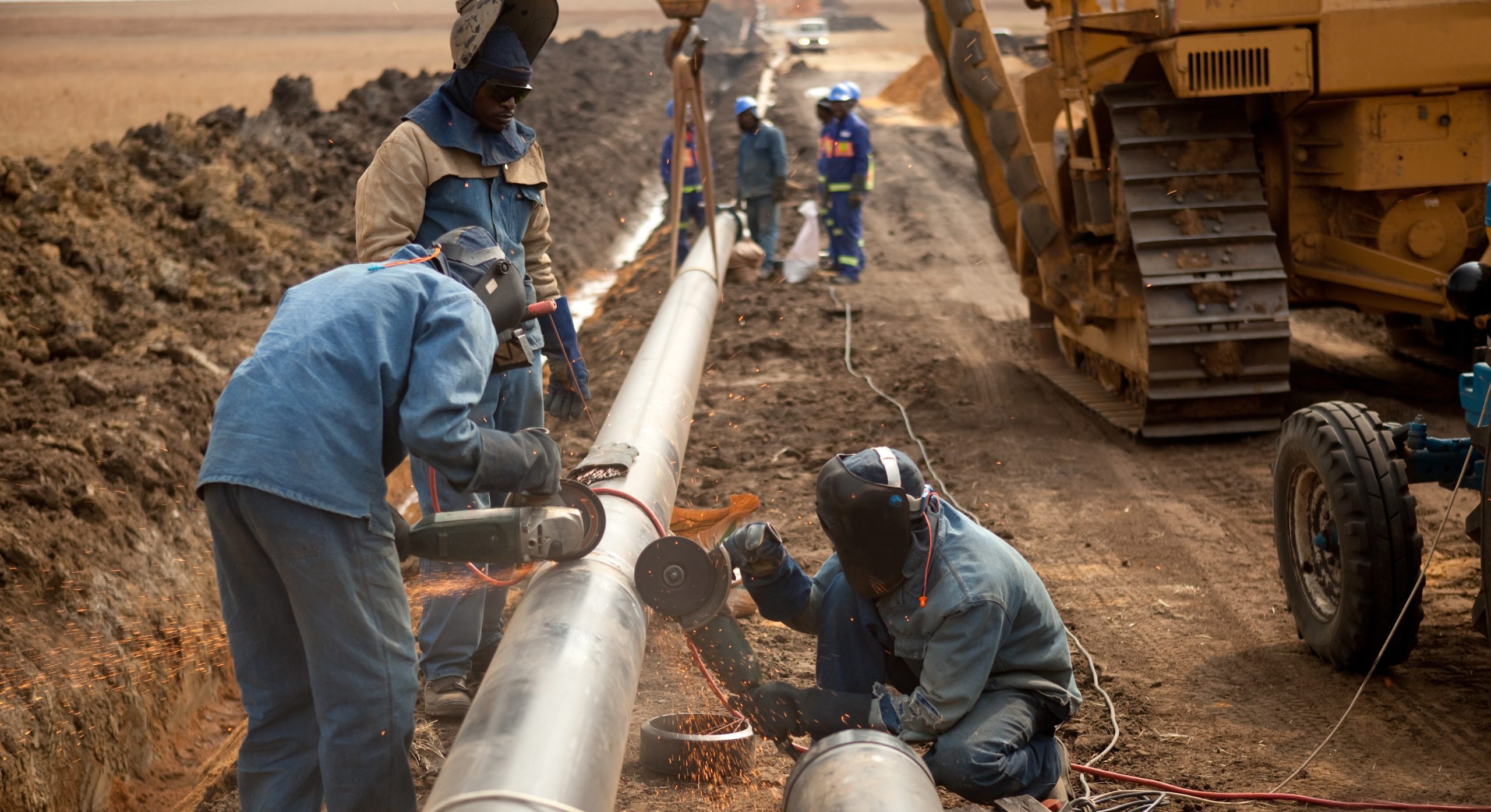Steamfitters and Mesothelioma
Steamfitters are tradespeople who install specialized piping in factories and other types of industrial buildings. They install piping in commercial structures and aboard ships.
Frequently, the gases and chemicals carried by these pipes can pose a danger to people and property were they to leak. But something else that can leak from pipes and also pose a danger is the mineral asbestos if they were constructed during the middle of the last century.
It was common practice between the decades of the 1940s and 1980s or later to incorporate asbestos into the manufacture of products and materials utilized by steamfitters.
When a steamfitter is exposed to asbestos (as is possible even today if he or she is maintaining or dismantling pipes installed 40 or more years ago), it can lead to the development of serious medical conditions. Topping the list is mesothelioma, a cancer that begins by attacking the thin layer of protective tissues surrounding the lungs, heart, and intestines.
Other possible consequences of asbestos exposure are asbestos lung cancer and harmful scarring of the lungs (a condition known as asbestosis).
These diseases can be fought. However, the battle usually is quite expensive to wage. It is for that reason many asbestos-exposed steamfitters elect to seek damages in court against the companies that made, distributed, and sold asbestos pipes and construction materials.
As it so happens, those capable of being held responsible are the companies that manufactured, distributed, and sold products containing asbestos. At the conclusion of a successful lawsuit brought by a steamfitter, those companies can be ordered to pay for medical care, lost wages, and other damages.

Who qualifies as a steamfitter?
These pipes can be situated inside manufacturing facilities, power plants, institutional buildings, large commercial buildings, large residential complexes, or aboard ships.
Pipe systems installed by steamfitters may incorporate a storage tank, boiler, or furnace. Other items that may be incorporated include pumps, valves, meters, regulators, connectors, and caps.
Tasks typically performed by steamfitters include:
- Pipe threading
- Pipe connecting
- Gasket and seal installation, inspection, removal, and replacement
- Systems inspection and testing
- Pipe and components reconfiguring
- Pipe and components dismantling
There are specialized types of steamfitters. These include gasfitters and sprinkler fitters.
A gasfitter works with pipes carrying natural gas or propane. A gasfitter also installs and maintains gas meters, valves, and burners. Additionally, a gasfitter connects gas-powered appliances to the pipes.
A sprinkler fitter works with pipes carrying water, gases, or chemicals intended to suppress or extinguish accidental fires inside or upon the roof and other exterior areas of a structure.
Steamfitters and asbestos exposure
Steamfitters work with and around materials of many types.
- Boilers
- Tanks
- Pumps
- Pipe coatings
- Gaskets
- Valves
- Pipe block
- Joint compounds
- Ducts
- Cement
- Paints
- Insulating wraparound sheets
- Spray-foam insulation
Asbestos was added to steamfitter products and materials to improve their performance and safety profiles.
For example, asbestos coated over a steam pipe made it possible for a person to touch the pipe without being burned. The molecular structure of the mineral asbestos was such that it could block heat within the pipe from conducting to the outer surface.
The reverse was also true. Asbestos could prevent extreme cold along the outer surface of a pipe from being conducted to the pipe’s interior.
In addition to insulating against heat and cold, asbestos also made products more durable. By integrating asbestos with metals, fabrics, and plastics, the finished product turned out lighter, stronger, and better able to resist corrosion.
However, the asbestos contained in a product could be released into the air—the same air breathed by steamfitters—were the product to be cut, threaded, filed, hammered, drilled, fastened, or simply just jostled.
Altering the product in any of those ways would cause tiny asbestos fibers to fracture and break away from the material with which it had been incorporated. Those particles would float in the air for hours or days like dust.
The risk that a steamfitter might inhale or ingest some of those asbestos particles was significant. And the risk became all the greater depending on the level of ventilation. In a confined space with poor ventilation, the asbestos particles might be concentrated—meaning, a high volume of particles would likely enter the steamfitter’s lungs if inhaled or intestines if ingested.
Yet even the risk posed from a light concentration of asbestos particles could be catastrophic in some cases.
What happens when asbestos is inhaled or ingested is this: those particles penetrate deep into the lungs or intestines and remain there. Rarely does the body expel them.
The trapped asbestos over the next decade or two or five works at corrupting the cells that line the lungs, heart, or intestines.
Eventually, those healthy cells become damaged cells, which sets the stage for them to turn cancerous.
Companies that manufactured products containing asbestos stopped making them in the 1970s after a huge public outcry and governmental action.
Steamfitters, though, continued to encounter asbestos products long after owing to the fact that it took years for distributor and retailer inventories of those carcinogenic wares to be used up.
And steamfitters even today can still come into contact with asbestos products if they work on old systems or inside old structures.
Steamfitters and asbestos exposure from building materials

- Drywall
- Insulation
- Ceiling and floor tiles
- Electrical systems
- Decorative plaster
- Bricks and mortar
Drywall was a particularly dangerous material because of the ease with which the asbestos it contained could be released into the air.
A release could occur when, for example, steamfitters opened up drywall in order to install a run of pipes. There were various ways drywall could be opened. One was to take a sledgehammer and punch open a portion of wall. Another was to cut into the wall with a sabre saw or some other type of bladed tool. And, if the pipe being run was of a small enough diameter, it would also be possible to open the wall using a drill.
By whatever means a hole was created in drywall, a cloud of asbestos-laced dust would invariably be produced.
The reason drywall contained asbestos in the first place was to make it sturdier, weigh less, block noise better, serve as an extra layer of insulation against heat and cold, and help prevent the spread of accidental fire.
The asbestos contained in drywall would be released at the site of the hole that was opened. The freed asbestos would come out in the form of miniscule fibers, smaller even the dust particles.
Once released, the asbestos fibers would float in the air. The steamfitter who opened the hole in the drywall would then be engulfed by a cloud of these fibers. The likelihood of breathing or swallowing some was extremely high.
A similar eventuality could await the steamfitter who cut, drilled, or hammered virtually any other construction material containing asbestos.
And therein lay the danger. As asbestos particles are breathed or swallowed, they penetrate deep into the lungs or intestines. They tend not to be expelled once they enter.
Trapped, the tiny fibers of asbestos begin to affect healthy cells adjacent to them. It doesn’t happen overnight, but after many long years—decades, even—the asbestos fibers take a toll on the cells. The final result is they may become cancerous.
Not every steamfitter who inhales or ingests asbestos develops cancer. But, when cancer does strike, it grows quickly and requires an aggressive medical response.

Steamfitters and asbestos exposure from power tools
Manufacturers of power tools in times past put asbestos into those products. The purpose was to shield the operator from heat created by the motor encased within the tool’s body. Asbestos was a remarkably efficient and economical insulator. It handily blocked the motor’s heat and as a bonus decreased the operator’s risk of sustaining an electrical shock.
Wear-and-tear from normal operation of a tool containing asbestos would cause fibers of asbestos to spew into the air. As the tool was used, the asbestos-containing components inside it would be subjected to stresses and strains sufficient to allow fibers to break free and be ejected into the air.
Another way asbestos could be emitted was during servicing when the tool housing would be opened to provide access to its internal parts. As the housing was separated from the tool body, clumps of caked asbestos that had built up within might become dislodged and fall to the workbench or floor. During the fall and upon impact, countless asbestos fibers would wrest free of the clump and become airborne. More asbestos would be expelled from the exposed inner body were the person performing the servicing to clean it with a blast of compressed air.
Steamfitters and asbestos exposure from working alongside other trades
The products used by those other trades—which included painters, electricians, ironworkers, and masonry workers—contained asbestos if they were made between the 1930s and 1970s.
When workers from other trades installed their own building materials, much sawing, shaping, pounding, and boring would transpire. Those actions caused the asbestos contained within the materials to break free and enter the air.
If a steamfitter happened to be in the vicinity when the asbestos release occurred, it was very possible that he or she would breath or swallow some of those floating particles.
This might also happen if the asbestos release took place days prior to the steamfitter’s arrival to begin working the job. Asbestos particles are so small and light that they can remain in the air for many days before settling.
Steamfitters’ rights to compensation after asbestos exposure
Asbestos exposure causes mesothelioma, asbestos lung cancer, asbestosis, and several other adverse conditions. Countless peer-reviewed medical studies have shown this to be true.
The premise is this. Steamfitters exposed to asbestos and who later developed an asbestos-caused disease are deemed to have suffered injury. The damages arising from this injury include doctor and hospital bills plus loss of wages if the injury was severe enough to leave the victim unable to continue working.
Steamfitters who find themselves in such circumstances may bring a lawsuit against the companies responsible for exposing them to asbestos.
A courtroom victory can mean an award of money sufficient to cover an asbestos-injured steamfitter’s medical bills and replace his or her lost wages.
However, victory can—and very often does—come about without the need to go through a full-blown trial. Defendants in these lawsuits usually prefer to reach an out-of-court agreement between themselves and the plaintiff steamfitters. The matter is then settled months or possibly years sooner than anticipated.
Some companies avoid lawsuits by declaring bankruptcy, but in so doing the federal government compels them to set aside money in a trust fund so that victims of asbestos disease can still receive compensation for the harms suffered.

About the author…
Chris T. Layloff was raised in the steel town of Granite City, Illinois. He graduated from Saint Louis University with a dual-degree in finance and economics in 2005, and received his J.D. from Saint Louis University School of Law in 2008.